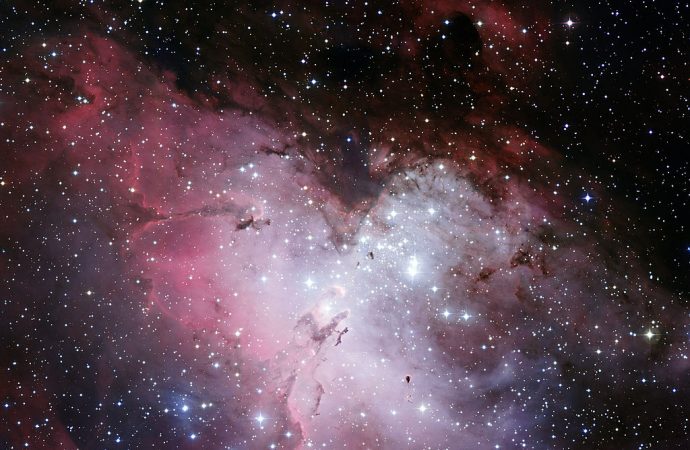Grab a book. Notice its length, width and thickness. They correspond, respectively, to the three dimensions of space and, we reasonably assume, to all objects in the three-dimensional space.
As you flip through the book, you note that its pages have two sides – in fact, all objects around you are two-sided. It may slip your mind that this trivial aspect is a feature of spacetime. And, yet, the spacetime itself is a two-sided surface.
The fact that the world is two-sided is sustained by an important property of two-sided spacetimes: a definite orientation for the arrow of time. Since we experience time as flowing irreversibly from the past to the future, we assume we are living in a two-sided world.
Still, there may be one-sided worlds out there, with one-sided objects in them. For the sake of imagination, picture yourself reading your book in a one-sided spacetime. Hard to believe it, but you would be able to read both sides of the pages at the same time. To see this, I encourage you to cut a sheet from the book (just kidding!) and glue it as in the picture below (fig 1), forming a trivial Mobius strip, the most known one-sided surface.

There is more to the story. In a one-sided world, time has no preferred orientation; it may flow from the past to the future or vice versa.
Now, we may ask where the other side of the universe is and how can we get there. We may find the answers in the recent paper “Quantum entanglement, two-sided spacetimes and the thermodynamic arrow of time”, posted in the physics online archive arXiv, and elected one of the best of the week by MIT Technology Review.
If we are going to delve into technical details, first we must describe the overall picture, by looking at prior scientific work, which resembles the pieces of a puzzle. Quantum entanglement happens to be the key to solve that puzzle.
Quantum entanglement
Entanglement is the process in which two quantum systems (usually two quantum particles) share the same existence. In a quantum realm, particles that interact can become entangled in such a way that they exist in a single quantum state. In this state, a measurement performed on one of the particles can reveal information about the other particle, no matter how far apart the particles are.
Juan Maldacena’s piece of the puzzle
In 1997, the physicist Juan Maldacena, now at the Institute for Advanced Study in Princeton, announced the birth of the renewed gravity/quantum field correspondence conjecture. According to this conjecture, certain quantum gravitational theories with fixed spacetime asymptotic behavior are equivalent to ordinary quantum field theories.
Maldacena demonstrated in 2001 that by entangling particles on one black hole with particles on another black hole, he could describe the wormhole connection between the black holes in the language of quantum mechanics. Entanglement is thus equivalent to physically tying chunks of spacetime together.
Building up spacetime with quantum entanglement
Van Raamsdonk has shown in 2010 that if the two quantum systems are not correlated, to begin with, they correspond, according to gravity/quantum field duality, to two separate components of spacetime. On the other hand, considering the second Maldacena’s paper, when the quantum systems are initially entangled in a particular state, the two components of the spacetime are classically connected.
Now, Van Raamsdonk wondered, what would happen to this classically-connected spacetime if we removed the entanglement between the two dual quantum systems? He answered that question using a proposal introduced in 2006 by Shinsei Ryu, now at the University of Illinois, and Tadashi Takanagi, now at the Yukawa Institute for Theoretical Physics at Kyoto University. Their equations allowed him to reduce the entanglement and watch the response in the dual spacetime, where he saw spacetime gradually pulling apart. Ultimately, reducing the entanglement to zero would break the spacetime into two disjointed chunks.
Quantum entanglement as geometric glue of spacetime— this was the essence of Van Raamsdonk’s paper.
The thermodynamic arrow of time
The arguments of the initial conditions between two quantum systems were reiterated recently in studies related to thermodynamics arrow of time. The existence of an arrow follows from the second law of thermodynamics. The law states that entropy, or disorder, tends to increase over time, which is why everything around us appears to unfold forward in time. The arrow of time is an arrow of increasing correlations. Sure, the second law assumes there are no initial correlations between particles.
What happens in the presence of initial entanglement between two quantum systems? we may ask. Things change dramatically. Late theoretical work suggests that the quantum entanglement places extra limits on the two systems resulting in the impossibility of entropy to increase further. As a result, the entropy can only decrease which reverses the arrow and makes time flow from the future to the past. In a recent experiment, Micadei and colleagues managed to observe this reversed arrow of time.
A two-sided world
Having all pieces in place, it’s time to assemble them and see the whole picture. We start with two quantum systems initially uncorrelated. As we have seen, these correlate to a spacetime having two disconnected components. Since there are no initial correlations, the time is oriented in the standard thermodynamic direction; from the past to the future. This state of fact is consistent in the dual gravity side with a spacetime having a preferred orientation of time, a time-oriented spacetime so to speak.
Now, let’s consider that the two quantum systems are entangled to begin with. The entanglement constrains the individual entropies to decrease such that there is no opportunity for the dominance of one orientation of time over the other. Thus we end up with a spacetime with no predefined orientation having two connected components; a time-unoriented spacetime, in other words.
With a time-unoriented spacetime at hand, let’s decrease the entanglement to zero, just as Van Raamsdonk has shown us. We move from an entangled state to a pure state, with no correlations, or in the language of geometry, from a time-unoriented spacetime to time-oriented one.
Let’s recall that unoriented spacetimes are one-sided and oriented spacetimes are two-sided. Having this argument in mind, when we reduce the entanglement to zero we translate a one-sided spacetime (in the left) into a two-sided spacetime (on the right). Quantum entanglement builds a connection between the two sides of a two-sided spacetime.

Fig. 2: One-sided spacetime (left) and a two-sided spacetime (right).
Our story could end here, with the stunning conclusion that our universe must have a second side that we do not have access to. We can only contemplate our side of the universe full of the stars in the night, but we will miss the best and, at the same time, the oddest part. On the other side of the universe, time runs backwards. If you would somehow reach the other side of our world you will “grow” younger in respect to the people you left behind.
Still, how do we reach this other side of the universe? We can speculate about it with Maldacena on your side (of the universe).
Entangled black holes
We return to Maldacena’s paper from 2001. Remember that he described the eternal black hole as two black holes united by a wormhole, as a manifestation of entanglement between particles on these two black holes. In other words, the two components of the spacetime in Van Raamsdonk proposal are identified by Maldacena with two black holes.
Since we have seen that the Van Raamsdonk’s two components of spacetime correspond to two sides of the spacetime, we can emphasize that the two black holes in the Maldacena conjecture are situated in different sides of the spacetime; somehow connecting the sides of spacetime.
Now we have completed the puzzle! To sum up, our universe must have a second side where time runs in reverse, from the future to the past, which can be accessed throughout the eternal black hole.
And yes… inside the black hole, you can read both sides of your page of the book at once!
Image Credit: ESO [CC BY 4.0], via Wikimedia Commons



